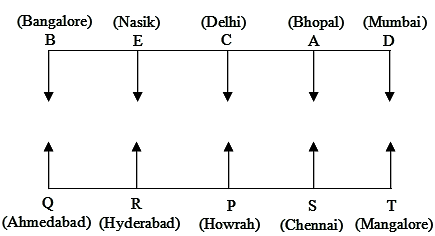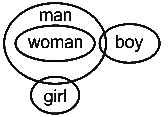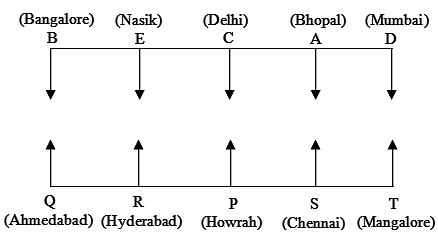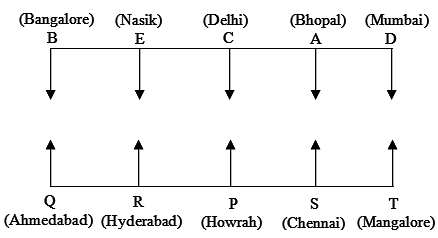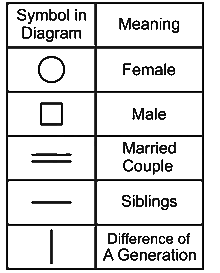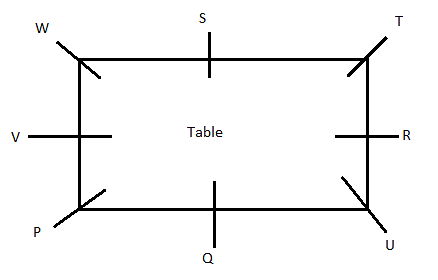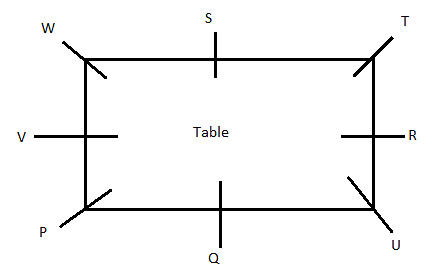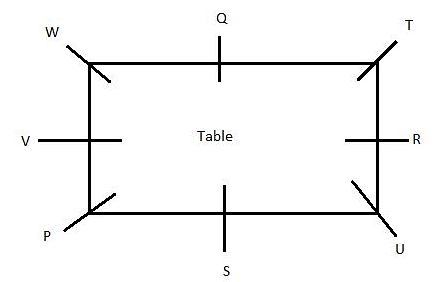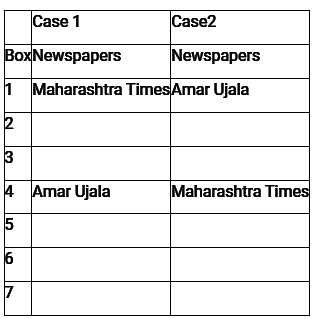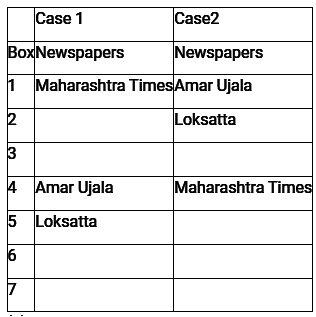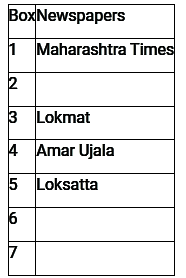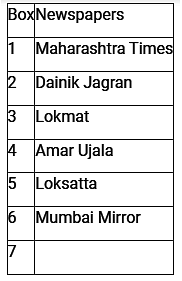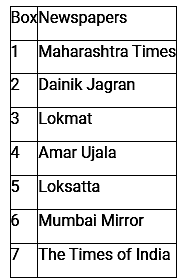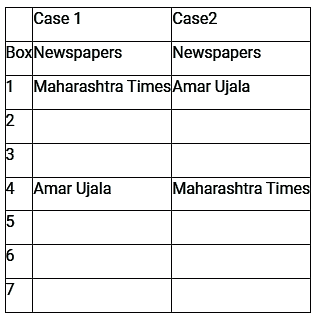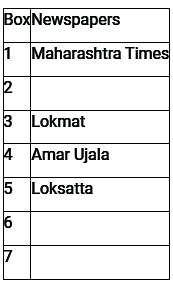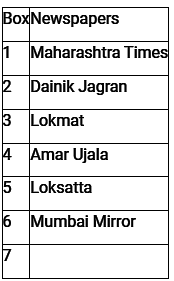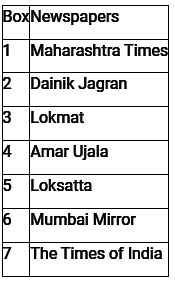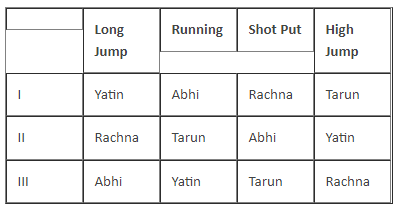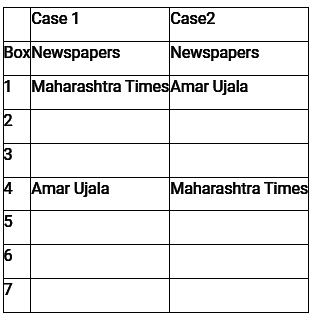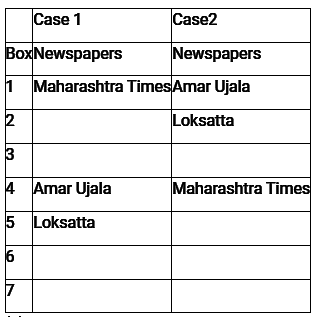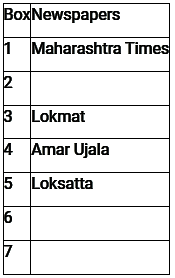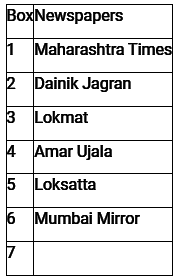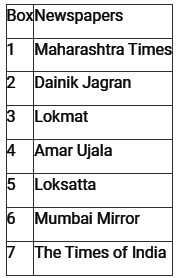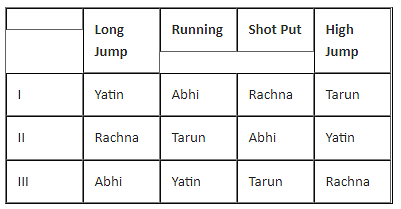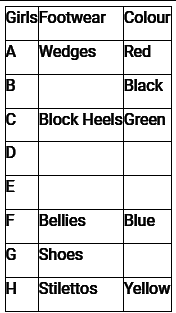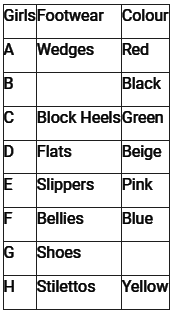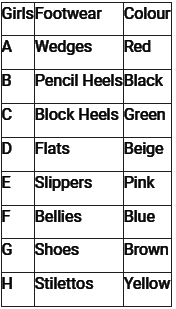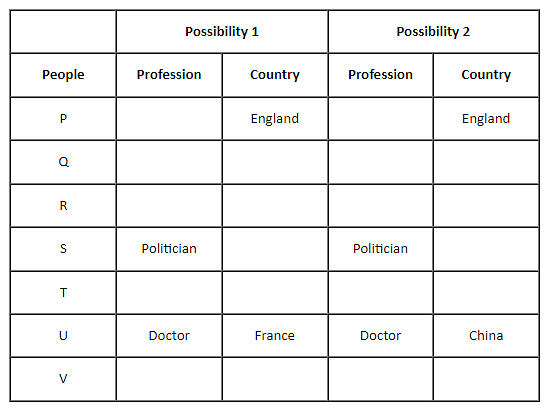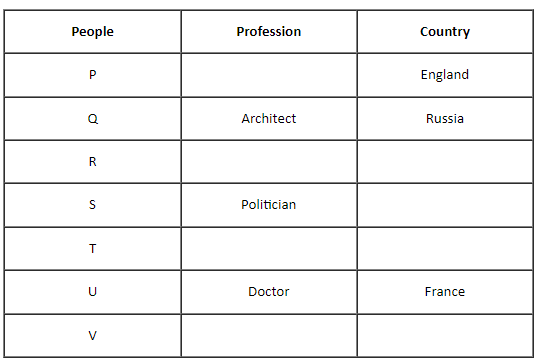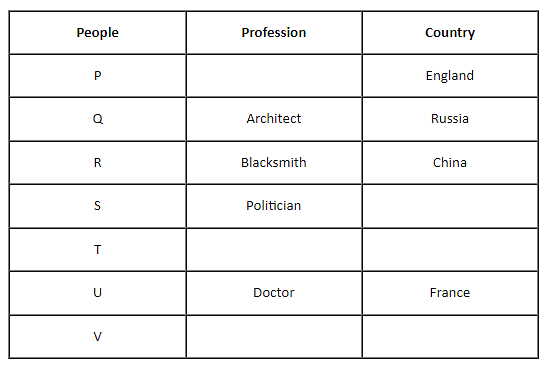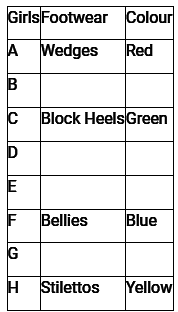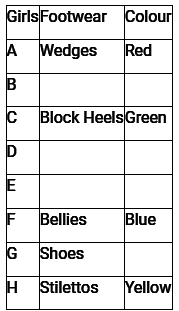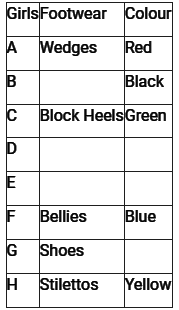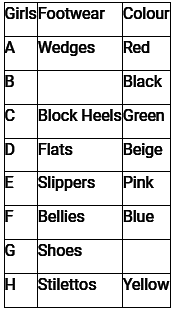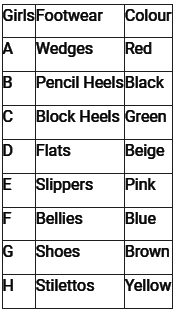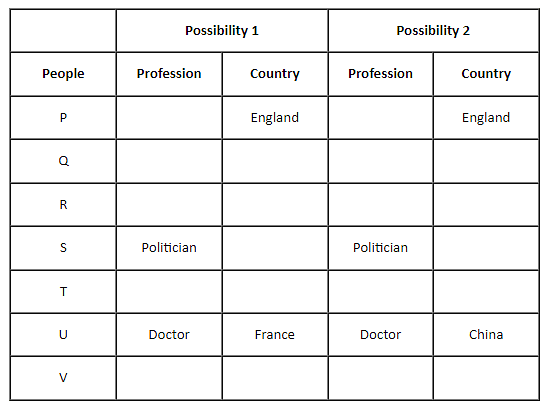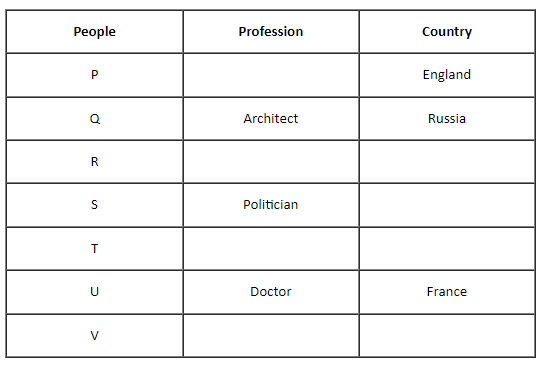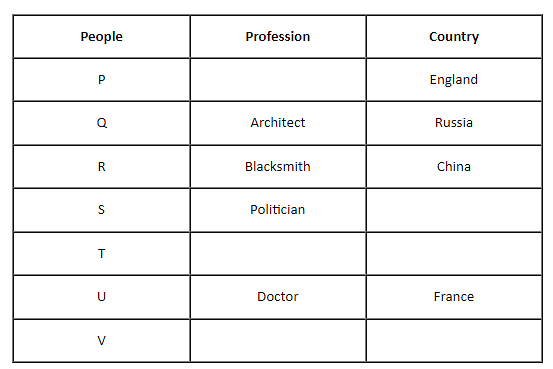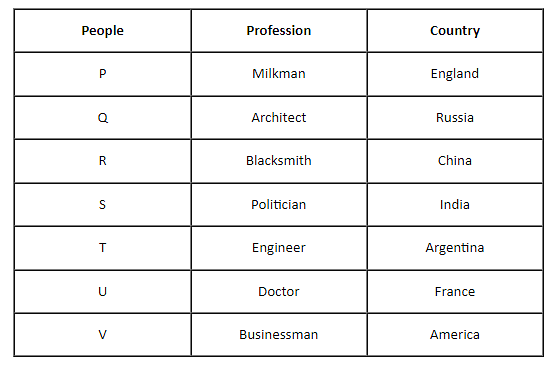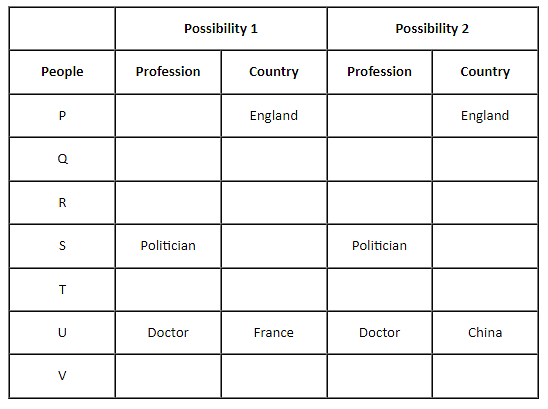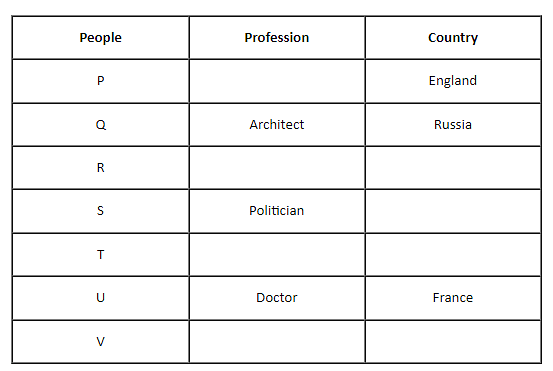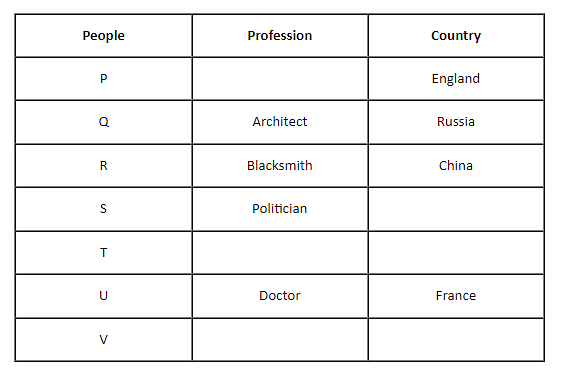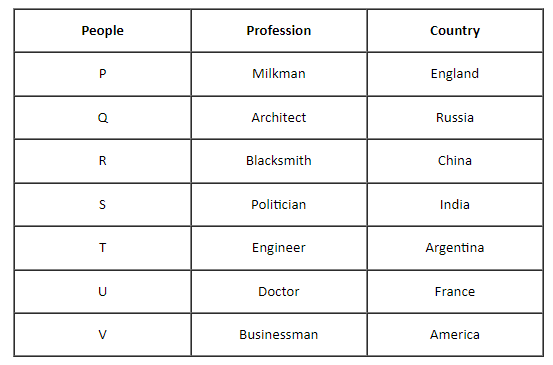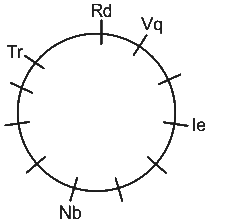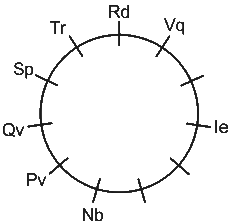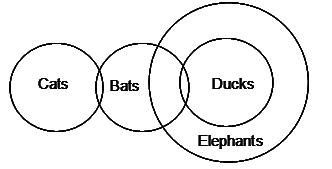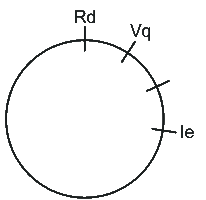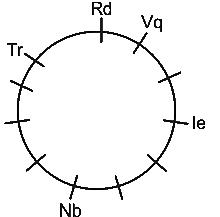IBPS SO Prelims Mock Test - 6 - Bank Exams MCQ
30 Questions MCQ Test IBPS SO Mock Test Series & Past Year Papers 2024 - IBPS SO Prelims Mock Test - 6
Directions: A passage is given below followed by several possible inferences, which can be drawn from the facts stated in the passage. You have to examine each inference separately in the context of the passage and decide upon its degree of truth or falsity.
Mark answer (1) if the inference is “definitely true”, i.e. it properly follows from the statement of facts given.
Mark answer (2) if the inference is “probably true” though not “definitely true” in the light of the facts given.
Mark answer (3) if the “data are inadequate”, i.e. from the facts given, you cannot say whether the inference is likely to be true or false.
Mark answer (4) if the inference is “probably false” though not “definitely false” in the light of the facts given.
Mark answer (5) if the inference is “definitely false”, i.e. it cannot possibly be drawn from the facts given or it contradicts the given facts.
The success of a surveillance device is contingent not only on its minuscule nature so as to be overlooked or neglected but also on the way the device is deployed or installed. CCTV cameras perched atop buildings or public places proclaiming the rubric “You are under continual surveillance” challenge the very ability of the cameras deployed to catch and record any spontaneous and damaging response in the purview of the camera. Alerting people by installing a camera at a visible vantage point defeats its very purpose.
Those up to some mischief, in the know of the camera would commit the act in its carefully identified blind spots.
The same holds true for bugged devices. If one knows that one’s phone is bugged, why would anyone use it; and if he uses it then why wouldn’t he stage a conversation to circumvent the intentions of the alleged snooper.
Q. Knowledge of a CCTV camera helps prevent mischief.
Direction: In the question below are given some statements followed by some conclusions. You have to take given statements to be true even if they seem to be at variance with commonly known facts. Read all the conclusions and then decide which of the given conclusions logically follows from the given statements disregarding commonly known facts.
Statements:
All trains are buses.
Some trains are not aeroplanes.
Conclusions:
I. Some buses are aeroplanes.
II. Some aeroplanes are not trains.
| 1 Crore+ students have signed up on EduRev. Have you? Download the App |
Directions: Read the following information carefully and answer the question given below:
Ten persons are sitting in two parallel rows containing five persons each. In row 1, A, B, C, D and E are sitting and all of them are facing south. In row 2, P, Q, R, S and T are sitting and all of them are facing north. Each member seated in a row faces another member of the other row. Moreover, each of them belongs to different cities — Mumbai, Delhi, Bangalore, Hyderabad, Nasik, Chennai, Bhopal, Howrah, Ahmedabad and Mangalore, but not necessarily in the same order.
There are only two persons sitting between the person from Mumbai, who sits at an extreme end, and E. P, who sits in the middle of the row, is not an immediate neighbour of Q, who is not from Mangalore. T is sitting at an extreme end. E, from Nasik, sits to the immediate right of the person from Delhi and faces the immediate neighbour of Q. B is not sitting at the east end of the row. P is not from Ahmedabad. There is only one person between C and D. D is from Mumbai. S, from Chennai, is an immediate neighbour of the person from Mangalore and does not face the person from Bangalore. R, who is from Hyderabad, is an immediate neighbour of the person from Ahmedabad, who in turn faces the immediate neighbour of the person from Nasik. There are two persons between the persons from Bhopal and Bangalore. B is not from Bhopal. T is not from Howrah.
Q. 'A' belongs to which of the following cities?
Direction: In the question below are given some statements followed by some conclusions. You have to take given statements to be true even if they seem to be at variance with commonly known facts. Read all the conclusions and then decide which of the given conclusions logically follows from the given statements disregarding commonly known facts.
Statements:
All Women are Man
Some Girls are Man
Only few Boys are Man
Conclusions:
I. All Girls are Boys
II. Some Boys are Men
Directions: Read the following information carefully and answer the question given below:
Ten persons are sitting in two parallel rows containing five persons each. In row 1, A, B, C, D and E are sitting and all of them are facing south. In row 2, P, Q, R, S and T are sitting and all of them are facing north. Each member seated in a row faces another member of the other row. Moreover, each of them belongs to different cities — Mumbai, Delhi, Bangalore, Hyderabad, Nasik, Chennai, Bhopal, Howrah, Ahmedabad and Mangalore, but not necessarily in the same order.
There are only two persons sitting between the person from Mumbai, who sits at an extreme end, and E. P, who sits in the middle of the row, is not an immediate neighbour of Q, who is not from Mangalore. T is sitting at an extreme end. E, from Nasik, sits to the immediate right of the person from Delhi and faces the immediate neighbour of Q. B is not sitting at the east end of the row. P is not from Ahmedabad. There is only one person between C and D. D is from Mumbai. S, from Chennai, is an immediate neighbour of the person from Mangalore and does not face the person from Bangalore. R, who is from Hyderabad, is an immediate neighbour of the person from Ahmedabad, who in turn faces the immediate neighbour of the person from Nasik. There are two persons between the persons from Bhopal and Bangalore. B is not from Bhopal. T is not from Howrah.
Q. If 'Mumbai' is related to 'Bhopal' in a certain way based on the given sitting arrangement, then 'Mangalore' is related to which of the following?
Direction: The following question consists of two statements numbered I and II. Decide if data given in the statements are sufficient to answer the questions below.
Who among A, B, C and D is the youngest?
I. C is younger than D but older than A and B.
II. D is the oldest.
III. A is older than B.
Directions: Read the following information carefully and answer the question given below:
Ten persons are sitting in two parallel rows containing five persons each. In row 1, A, B, C, D and E are sitting and all of them are facing south. In row 2, P, Q, R, S and T are sitting and all of them are facing north. Each member seated in a row faces another member of the other row. Moreover, each of them belongs to different cities — Mumbai, Delhi, Bangalore, Hyderabad, Nasik, Chennai, Bhopal, Howrah, Ahmedabad and Mangalore, but not necessarily in the same order.
There are only two persons sitting between the person from Mumbai, who sits at an extreme end, and E. P, who sits in the middle of the row, is not an immediate neighbour of Q, who is not from Mangalore. T is sitting at an extreme end. E, from Nasik, sits to the immediate right of the person from Delhi and faces the immediate neighbour of Q. B is not sitting at the east end of the row. P is not from Ahmedabad. There is only one person between C and D. D is from Mumbai. S, from Chennai, is an immediate neighbour of the person from Mangalore and does not face the person from Bangalore. R, who is from Hyderabad, is an immediate neighbour of the person from Ahmedabad, who in turn faces the immediate neighbour of the person from Nasik. There are two persons between the persons from Bhopal and Bangalore. B is not from Bhopal. T is not from Howrah.
Q. Which of the following statements is definitely false?
Direction: In the following question, a given questions is followed by information in two statements. You have to decide the data in which statement (s) is sufficient to answer the question and mark your answer accordingly.
Q. How many brothers does A have?
I. A's father has three children.
II. A has only one sister.
Directions: Study the following information carefully and answer the given question.
P, Q, R, S, T, U, V and W are sitting around a square table facing the centre in such a way that four of them sit at four corners of the square, while the other four sit in the middle of each of the four sides.
1. R is sitting in the middle of the square table, and R is second to the right of Q.
2. W and U at the opposite corners of the table and U is at the left side of R.
3. Only two people can sit between S and P.
4. V is sitting third to the left of U.
5. S is not an immediate neighbour of Q.
Q. How many people are sitting between S and Q?
Directions: Study the following information carefully to answer the given questions:
A F * O T & V B A # U % E @ F H E S ? M O J Q + Y C Z $ P & I @ O T F H X U Z D
Q. How many vowels are present in the series?
Directions: Study the following information carefully and answer the given question.
P, Q, R, S, T, U, V and W are sitting around a square table facing the centre in such a way that four of them sit at four corners of the square, while the other four sit in the middle of each of the four sides.
1. R is sitting in the middle of the square table, and R is second to the right of Q.
2. W and U at the opposite corners of the table and U is at the left side of R.
3. Only two people can sit between S and P.
4. V is sitting third to the left of U.
5. S is not an immediate neighbour of Q.
Q. If S and Q swap their positions, then who are the immediate neighbours of Q?
Directions: Study the following information carefully to answer the given questions:
A F * O T & V B A # U % E @ F H E S ? M O J Q + Y C Z $ P & I @ O T F H X U Z D
Q. If we drop all the symbols then which letter lies at 12th position from the right end?
Directions: A number and word arrangement machine when given an input of line of numbers and words, rearranges them following a particular rule in each step. Given below is an illustration of input and rearrangement:
Input: love 19 ajay 12 once 94 use 32 time 47 wickedly
Step I: ajay love 19 12 once 94 use 32 47 time wickedly
Step II: ajay once 19 12 94 use 32 47 love time wickedly
Step III: ajay once use 19 12 94 32 47 love time wickedly
Step IV: ajay once use 94 19 12 32 47 love time wickedly
Step V: ajay once use 94 47 19 12 32 love time wickedly
Step VI: ajay once use 94 47 32 19 12 love time wickedly
Now, as per the rules followed in the above steps, find out the appropriate steps for the input given below and answer the question.
Input: cast 17 omit 13 ace fan 23 rate 34 uncut 56
Q. What is the last step for the given input?
Directions: Study the following information carefully to answer the given questions:
A F * O T & V B A # U % E @ F H E S ? M O J Q + Y C Z $ P & I @ O T F H X U Z D
Q. If we drop all the vowels and symbols then which letter comes at the 15th place from the right end?
Directions: A number and word arrangement machine when given an input of line of numbers and words, rearranges them following a particular rule in each step. Given below is an illustration of input and rearrangement:
Input: love 19 ajay 12 once 94 use 32 time 47 wickedly
Step I: ajay love 19 12 once 94 use 32 47 time wickedly
Step II: ajay once 19 12 94 use 32 47 love time wickedly
Step III: ajay once use 19 12 94 32 47 love time wickedly
Step IV: ajay once use 94 19 12 32 47 love time wickedly
Step V: ajay once use 94 47 19 12 32 love time wickedly
Step VI: ajay once use 94 47 32 19 12 love time wickedly
Now, as per the rules followed in the above steps, find out the appropriate steps for the input given below and answer the question.
Input: cast 17 omit 13 ace fan 23 rate 34 uncut 56
Q. How many steps are required to arrange the given input based on the above pattern?
Directions: Study the given information carefully and answer the following questions below.
There are 7 boxes stacked upon each other. These boxes have a bunch of newspapers viz. Loksatta, Mumbai Mirror, Dainik Jagran, The Times of India, Maharashtra Times, Amar Ujala, Lokmat. Each box has a bunch of one particular newspaper.
Box of Lokmat is kept 2 boxes above the box of Loksatta. There are 2 boxes between the boxes of Maharashtra Times and Amar Ujala, either of them is at the top of the stack. Box of Mumbai Mirror is not at the bottom of the stack. Box of Loksatta is kept immediately below the box of Amar Ujala. Box of Dainik Jagran is not kept below the box of Loksatta.
Q. How many boxes are there below the box of newspaper Loksatta?
Directions: A number and word arrangement machine when given an input of line of numbers and words, rearranges them following a particular rule in each step. Given below is an illustration of input and rearrangement:
Input: love 19 ajay 12 once 94 use 32 time 47 wickedly
Step I: ajay love 19 12 once 94 use 32 47 time wickedly
Step II: ajay once 19 12 94 use 32 47 love time wickedly
Step III: ajay once use 19 12 94 32 47 love time wickedly
Step IV: ajay once use 94 19 12 32 47 love time wickedly
Step V: ajay once use 94 47 19 12 32 love time wickedly
Step VI: ajay once use 94 47 32 19 12 love time wickedly
Now, as per the rules followed in the above steps, find out the appropriate steps for the input given below and answer the question.
Input: cast 17 omit 13 ace fan 23 rate 34 uncut 56
Q. Which of the following is the third element from left in the third step for the given input?
Directions: Study the given information carefully and answer the following questions below.
There are 7 boxes stacked upon each other. These boxes have a bunch of newspapers viz. Loksatta, Mumbai Mirror, Dainik Jagran, The Times of India, Maharashtra Times, Amar Ujala, Lokmat. Each box has a bunch of one particular newspaper.
Box of Lokmat is kept 2 boxes above the box of Loksatta. There are 2 boxes between the boxes of Maharashtra Times and Amar Ujala, either of them is at the top of the stack. Box of Mumbai Mirror is not at the bottom of the stack. Box of Loksatta is kept immediately below the box of Amar Ujala. Box of Dainik Jagran is not kept below the box of Loksatta.
Q. How many boxes are there between the box of Mumbai Mirror and the box of Lokmat?
Directions: Read the following information and answer the question given below.
A school organised an event in which Abhi, Tarun, Yatin and Rachna participated. Each participant bagged first position in one of the four categories of events viz. Long Jump, Running, Shot Put, and High Jump, but not necessarily on the same order. It is also interesting to know that each participant also bagged second position and third position in two of the four events.
Further information is as follows:
(i) Yatin was first in Long Jump and second in High Jump.
(ii) The winner of Shot Put was placed third in High Jump.
(iii) Rachna did not stand first in Running.
(iv) Rachna was a close second behind Yatin in one of the four events.
(v) Tarun was placed third in Shot Put, but did not get a place in Long Jump and was not first in Running.
Q. Which of the following statements are incorrect?
I. Rachna bagged third position in Running.
II. Rachna bagged third position in High Jump.
III. Abhi bagged third position in Running.
Directions: Study the given information carefully and answer the following questions below.
There are 7 boxes stacked upon each other. These boxes have a bunch of newspapers viz. Loksatta, Mumbai Mirror, Dainik Jagran, The Times of India, Maharashtra Times, Amar Ujala, Lokmat. Each box has a bunch of one particular newspaper.
Box of Lokmat is kept 2 boxes above the box of Loksatta. There are 2 boxes between the boxes of Maharashtra Times and Amar Ujala, either of them is at the top of the stack. Box of Mumbai Mirror is not at the bottom of the stack. Box of Loksatta is kept immediately below the box of Amar Ujala. Box of Dainik Jagran is not kept below the box of Loksatta.
Q. Box of which newspaper is kept at the bottom of the stack?
Directions: Read the following information and answer the question given below.
A school organised an event in which Abhi, Tarun, Yatin and Rachna participated. Each participant bagged first position in one of the four categories of events viz. Long Jump, Running, Shot Put, and High Jump, but not necessarily on the same order. It is also interesting to know that each participant also bagged second position and third position in two of the four events.
Further information is as follows:
(i) Yatin was first in Long Jump and second in High Jump.
(ii) The winner of Shot Put was placed third in High Jump.
(iii) Rachna did not stand first in Running.
(iv) Rachna was a close second behind Yatin in one of the four events.
(v) Tarun was placed third in Shot Put, but did not get a place in Long Jump and was not first in Running.
Q. Who among the following did not occupy any position (I, II, or III) in Shot Put?
Direction: Study the following information carefully and answer the questions given below.
There are eight girls in a party – A, B, C, D, E, F, G and H wearing different types of footwear – Shoes, Wedges, Stilettos, Flats, Slippers, Bellies, Block Heels and Pencil Heels, not necessarily in the same order. Each girl has a different colour footwear – Yellow, Green, Pink, Red, Black, Brown, Beige and Blue, not necessarily in the same order.
A wears Red colour Wedges. C wears Green colour Block Heels. H wears Yellow colour Stilettos. F wears Blue colour Bellies. Neither B nor D nor E wears Shoes. Neither G nor E nor D wears Black colour footwear. One of them wears Beige colour Flats and one of them wears Pink colour Slippers. D does not wear Slippers. The one whose footwear is Black in colour wears Pencil Heels.
Q. What is the colour of B’s footwear?
Directions: Study the following information carefully and answer the question given below.
There are seven people in a World Economic Delegations Team. They are P, Q, R, S, T, U and V. These people are Doctor, Engineer, Architect, Milkman, Businessman, Blacksmith and Politician, but not necessarily in the same order. They come from seven different countries viz/Argentina, America, China, India, England, Russia and France, but not necessarily in the same order.
P belongs to England. S is a Politician. The person who is a Businessman comes from America. The person who is an Architect comes from Russia. U does not belong to Russia, America, Argentina, or India.
U is not a Blacksmith, Milkman, or an Engineer. Q does not belong to China, America, Argentina, or India. Q is not a Milkman, Doctor, Blacksmith, or an Engineer. R is not a Businessman and he does not come from India or Argentina. Neither S nor V belongs to Argentina. P is not an Engineer. The person from China is a Blacksmith.
Q. Who among the following is a Blacksmith?
Direction: Study the following information carefully and answer the questions given below.
There are eight girls in a party – A, B, C, D, E, F, G and H wearing different types of footwear – Shoes, Wedges, Stilettos, Flats, Slippers, Bellies, Block Heels and Pencil Heels, not necessarily in the same order. Each girl has a different colour footwear – Yellow, Green, Pink, Red, Black, Brown, Beige and Blue, not necessarily in the same order.
A wears Red colour Wedges. C wears Green colour Block Heels. H wears Yellow colour Stilettos. F wears Blue colour Bellies. Neither B nor D nor E wears Shoes. Neither G nor E nor D wears Black colour footwear. One of them wears Beige colour Flats and one of them wears Pink colour Slippers. D does not wear Slippers. The one whose footwear is Black in colour wears Pencil Heels.
Q. Who wears Brown colour footwear?
Directions: Study the following information carefully and answer the question given below.
There are seven people in a World Economic Delegations Team. They are P, Q, R, S, T, U and V. These people are Doctor, Engineer, Architect, Milkman, Businessman, Blacksmith and Politician, but not necessarily in the same order. They come from seven different countries viz/Argentina, America, China, India, England, Russia and France, but not necessarily in the same order.
P belongs to England. S is a Politician. The person who is a Businessman comes from America. The person who is an Architect comes from Russia. U does not belong to Russia, America, Argentina, or India.
U is not a Blacksmith, Milkman, or an Engineer. Q does not belong to China, America, Argentina, or India. Q is not a Milkman, Doctor, Blacksmith, or an Engineer. R is not a Businessman and he does not come from India or Argentina. Neither S nor V belongs to Argentina. P is not an Engineer. The person from China is a Blacksmith.
Q. Who among the following belongs to France?
Directions: In the question below are given a statement followed by two courses of action numbered I and II.
Statement:
There is an unusual disparity in ratio of men and women in several states of India.
Courses of Action:
I. Government should frame policies to expedite female feticide in India.
II. Government should impose strict law against illegal sex determination tests at clinics in India.
Directions: Study the following information carefully and answer the question given below.
There are seven people in a World Economic Delegations Team. They are P, Q, R, S, T, U and V. These people are Doctor, Engineer, Architect, Milkman, Businessman, Blacksmith and Politician, but not necessarily in the same order. They come from seven different countries viz/Argentina, America, China, India, England, Russia and France, but not necessarily in the same order.
P belongs to England. S is a Politician. The person who is a Businessman comes from America. The person who is an Architect comes from Russia. U does not belong to Russia, America, Argentina, or India.
U is not a Blacksmith, Milkman, or an Engineer. Q does not belong to China, America, Argentina, or India. Q is not a Milkman, Doctor, Blacksmith, or an Engineer. R is not a Businessman and he does not come from India or Argentina. Neither S nor V belongs to Argentina. P is not an Engineer. The person from China is a Blacksmith.
Q. The person who comes from Argentina is a/an
Directions: Study the following information and answer the given questions.
Certain people are sitting at a circular table facing towards centre not necessarily in the same order.
Three persons sit between Nb and Tr. Qv is an immediate neighbour of Sp and Pv. Three persons sit between Ie and Pv. Rd is sitting to the immediate right of Vq. Two persons sit between Ie and Nb. Ie sits second to the left of Vq. Only one person sits between Rd and Sp. Tr is not an immediate neighbour of Vq.
Q. How many persons are sitting between Ie and Sp when counted in anticlockwise direction from Ie?
Directions: The item below consists of three statements followed by three conclusions. You have to take the given statements to be true even if they seem to be at variance from commonly known facts. Read all the conclusions and then decide which of them logically follow(s) from the given statements disregarding commonly known facts.
Statements:
Some cats are bats.
Some bats are ducks.
All ducks are elephants.
Conclusions:
I. Some ducks are cats.
II. Some elephants are bats.
III. Some elephants are cats.
Directions: Study the following information and answer the given questions.
Certain people are sitting at a circular table facing towards centre not necessarily in the same order.
Three persons sit between Nb and Tr. Qv is an immediate neighbour of Sp and Pv. Three persons sit between Ie and Pv. Rd is sitting to the immediate right of Vq. Two persons sit between Ie and Nb. Ie sits second to the left of Vq. Only one person sits between Rd and Sp. Tr is not an immediate neighbour of Vq.
Q. Who is sitting fourth to the right of Pv?



